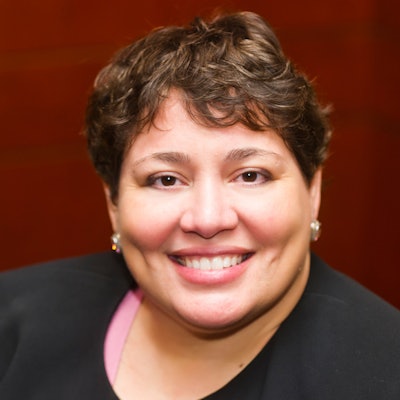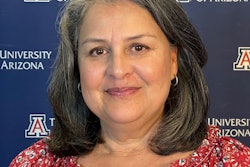Latino student success in higher education is not where it needs to be, according to findings from Latino student success organization Excelencia in Education. Deborah A. Santiago
Deborah A. Santiago
"Our mission is to accelerate Latino student success in higher education,” said Dr. Deborah Santiago, lead analysis researcher and CEO of Excelencia CEO. "One of the challenges we face, in looking at this data, is that acceleration is not happening for Latino student success in a way that we need to."
Degree completion gaps had been closing up until about 2019, Santiago said. But according to the analysis, gaps between Latino and white students have grown over the last four years. At two-year institutions, the gap increased from -2% to -5%, while four-year schools saw a smaller but still present gap widening from -12% to -13%.
And it’s not that graduation rates have changed much for Latino students in the last few years – 33% for two-year and 51-52% for four-year. It’s that the rate at which white students were graduating had grown, Santiago said, adding that such growth was not a negative thing.
"This is not closing the gap by having others do worse,” Santiago said. “It's about making sure that while everybody is increasing, that Latinos are accelerating so we can really close gaps."
At a briefing on Tuesday, Excelencia leaders discussed degree attainment, enrollment and projected plans for the next decade.
"Latino college completion is of great importance on an ongoing basis in higher education and to our country, as it relates to a future workforce and civic leadership," said Sarita Brown, president of Excelencia.
Gender gaps also exist and are widening among Hispanic students, Santiago said. The data showed that 26% of Hispanic males have an associate degree or higher, compared to 33% of Hispanic females. Hispanic males seemingly are far behind males in general – 26% compared to 46% of all males.
Compared to white peers, Latino students were also observed to be more likely to no longer be enrolled in college, the analysis found. 45% and 31% of Latino students are no longer enrolled at two-year and four-year institutions, respectively. For white students, the rates are 38% and 20%.
Latino students – given the lingering effects of the COVID-19 pandemic, inflation, and economic changes – are feeling a tension of having to choose between college and working, Santiago said, citing what she’s heard from schools. Other listed issues included lack of affordability, technology issues, and insufficient outreach.
Latino students represent a “post-traditional” majority, Santiago said, meaning that the higher ed journeys of Latino students were similar to that of today’s students more than the traditional high school-to-college student.
“We know that the profile of Latino students actually is closer to more 80% of students today than the traditional student who goes straight from high school to college, lives on campus, and finishes in four years,” Santiago said. “Less than 20% of students today fit that profile. And a lot of our strategies in public policy, our investments, and efforts at institutions really have to be looking at the profile of these post-traditional students."
Despite these overall setbacks in completion and enrollment, there are indeed institutions working towards Latino student success, as highlighted by Excelencia.
The majority of schools enrolling or graduating Hispanic students the most – as of 2021-22 – were located in Florida and Texas, such as Miami Dade College (28,583 enrolled, 8,043 associate degrees granted), Florida International University (26,890 enrolled, 8,365 bachelor’s degrees granted), and UTexas Rio Grande Valley (24,721 enrolled, 4,598 bachelor’s degrees granted).
Despite having the largest Hispanic population in the nation, California does not have any schools in the top 5 schools enrolling Hispanic students, though two – Cal State Northridge and Fullerton – are among those graduating the most with bachelor’s degrees.
To decisively close degree attainment gaps, Latino students need to earn 6.2 million degrees by 2030, but current numbers are falling short of reaching yearly goals.
“This is a doable deed,” Santiago said. “There are institutions across this country that are enrolling and graduating Latino students that ... are looking with intentionality and impact to serve these students and are doing well. And we have an entire database of what's working, so there are no excuses for inaction."















